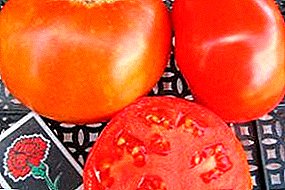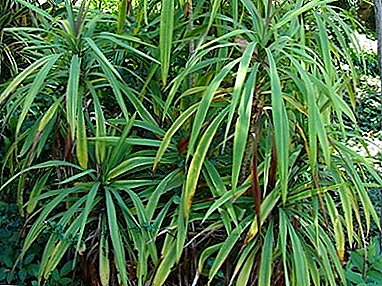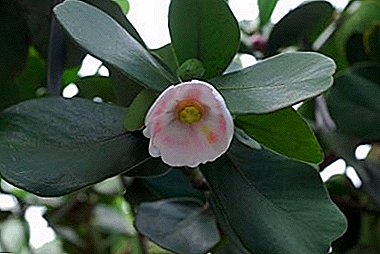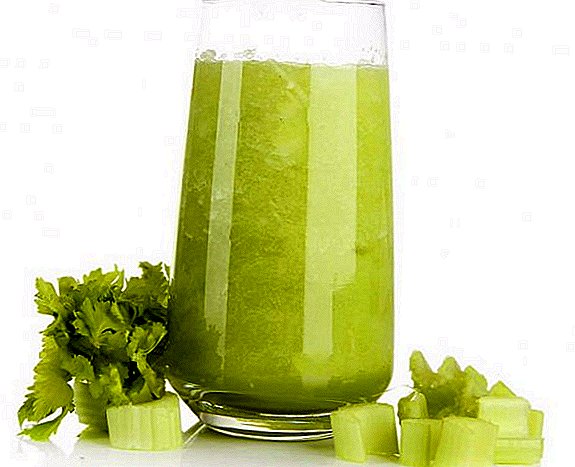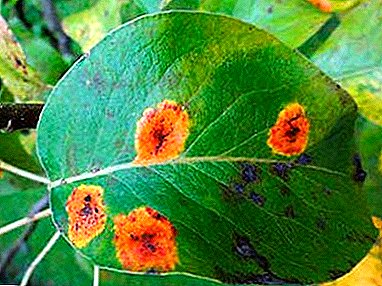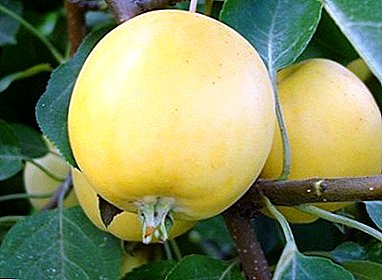
The apple variety of Ural filling is distinguished by its taste.
Honey-sweet spicy fruit is perfect for drying, and when fresh, these apples have no equal at all.
What kind is it?
Apple variety Ural bulk (sometimes it is called simply Ural bulk or Ural bulk apple) refers to the autumn view. It is characterized by moderate resistance to fungal diseases. Winter and drought resistance is high.
Fresh fruit with proper storage are up to two months. This should be done in refrigerators (refrigerator) or special storage facilities at a temperature of about 0 ° C. Calibrated by size apples are best placed in wooden containers (boxes, containers or racks).
Pollination
This is a self-infertile apple variety.. This means that pollination occurs due to the pollen of apple flowers of another variety. Ideally, plant lanes of two varieties at a distance of 5 meters from one another.
Description of a grade the Ural bulk
The appearance of apple trees is characterized by medium height, thick bright green crown and light yellow fruits.
In the photo below you can see what the Ural bulk apple looks like and additionally read the description.
Medium-growing and low growth.
The krone is well leafy, of medium thickness, bright and dark green.
Curved branches at almost a right angle away from the trunk.
The bark is colored greenish gray. Fruiting - mixed:
- pillows;
- twigs;
- last year's gains.
 The fruits are quite small, their weight on average rarely exceeds 100 grams.
The fruits are quite small, their weight on average rarely exceeds 100 grams.
There are fruits and up to 150-170 grams. On a tree, as a rule, apples of approximately the same size grow.
Lack of rust, peel smooth, glossy. Apples have a shallow, narrow saucer and a short stem of medium thickness.
The skin is smooth and shiny. The color is golden yellow. Subcutaneous points are not visible.
The flesh is very juicy, grainy creamy white. The taste is very harmonious - dessert, closer to sweets. The aroma of the apple is mild.
On average, the fruit contains:
- 13.6% soluble dry matter;
- 10.6% of sugars;
- 0.7% titrated acids;
- 8.6 mg / 100 g ascorbic acid.
A photo



Breeding history
The Ural bulk apple variety was bred by P.A. Zhavoronkov at the Research Institute of Poloivoszhosovodstva and Potato Breeding of the Southern Urals, due to crossing varieties Red Ranetka and Papirovka.
Natural growth region
The area of natural growth of the Ural bulk apple tree is considered to be an area close to the place of its selection. Zoned variety in the North-Western part of Russia, as well as in Kazakhstan - from the Urals to the Far East since 1959.
However, with proper care and proper planting, the apple tree gets on well in other regions.
Yield
 According to the literature, the onset of fruiting begins quite early - 2-3 years after planting a tree. Maturation occurs in late September. Since the variety is popular for processing, it is characterized by three periods of removable maturity:
According to the literature, the onset of fruiting begins quite early - 2-3 years after planting a tree. Maturation occurs in late September. Since the variety is popular for processing, it is characterized by three periods of removable maturity:
- the first - for the manufacture of juices (when the flesh is still fresh, firm and juicy);
- second - for fresh consumption (perfectly ripe fruit);
- third - for processing the manufacture of jam, jam or jelly (overripe fruit, the pulp is very soft).
Productivity is very high, regular, annual. The average yield is 200 centners per hectare; up to 250 kg of fruits are removed from one tree.
Planting and care
From care directly depends on the yield of apple. Apple Ural bulk unpretentious in the care and moderately resistant to fungal diseases.
When planting a tree using classic fertilizer.
So, let's see what time of year it is necessary to plant this sort of apple and what conditions are preferable for it. Ural bulk - autumn variety of apple. Planting this variety is desirable in one of two periods:
- spring (late April);
- autumn (late September - early October).
but still recommended autumn for this variety. Planting can be done by planting ready seedlings or from the seeds of the fruit.
The second method is very exciting, however, long and troublesome. It is more suitable for skilled gardeners.
Also there is a risk that eventually you will grow a completely different treeand therefore we will immediately consider the features of the first method.
In order for a tree to grow strong, healthy and beautiful, the first thing that is necessary is to choose the right seedling.
When seedlings are already purchased, it is very important to choose the right place for planting an apple tree. The main signs of the right place for landing the Ural bulk:
- sunny territory;
- lack of wind;
- landing zones are well drained;
- zone of loamy or sandy soil;
- places away from groundwater.
The most important point in the landing process is the preparation of landing holes. The optimal parameters of the pit for planting an apple of this variety: 0.8 x 0.7m.
The landing algorithm is quite simple. The upper layer of excavated earth is mixed with the lower layer and the following are introduced. fertilizers:

- 18–20 kg of horse manure;
- 250 grams of wood ash;
- 250 g of superphosphate;
- 100 grams of potassium sulfate.
The pit is filled with a mixture of soil and fertilizer by 2/3. Fertile soil without fertilizer is poured on top. Pit watered and again fill the layer of fertile soil. Now you can carefully plant an apple tree, preferably with someone's help. After, be sure to tie her to a wooden peg figure eight.
The next year after planting, in the spring, it is important to form a deciduous apple crown. It is necessary to trim the ends of each branch.
Since the apple tree comes into fruition early, in the first year, be sure to prune all the flowers. This will allow to get the first crop in a larger volume.
In the first year in April, it is necessary to irrigate trees with mixtures that protect against pests. This procedure should be performed twice:
- when buds began to swell on branches;
- before blooming buds.
Basic care during the first two to three years after planting:
- tying trees to protect against rodents and hares (material - parchment, lapnik);
- mulching with humus pristvolnyh circles;
- hilling the ground to a height of twenty centimeters;
- top dressing with nutritious mixes;
- irrigation of trees with mixtures that protect against pests.
Diseases and pests
 Apple-tree of a grade the Ural bulk is moderately resistant to various fungal diseases.
Apple-tree of a grade the Ural bulk is moderately resistant to various fungal diseases.
This means that a scab, powdery mildew, fruit rot or a burn can affect a tree. Consider the specifics and characteristics of these diseases.
Feature of scab - the defeat of the leaves of the tree, in the first place, and then the defeat of the fruit. The main reason for the appearance of this fungus is most often the stagnation of air inside the crown of the tree or increased humidity.
The next disease occurs most often after heavy rains is powdery mildew. A characteristic sign of the disease is the appearance of the mycelium fungus in the form of white bloom on the leaves of trees. Infection occurs on the tree from the bottom up, until it completely attacks the tree.
Fruit Rot - A disease of the fungal type, which penetrates into the middle of the fetus through cracks and wounds created earlier by animals, hail or any other way. The first sign is the appearance of a brown spot on the skin of the apple, which will grow until the apple is completely rotten.
A series of optimal comprehensive measures that bring a preventive effect against various diseases of the apple tree:
- pollination of colloidal sulfur and copper compounds;
- the use of varieties with high resistance to the disease;
- destruction of the affected elements;
- fertilization of potash and phosphorus type;
- feed with potash fertilizers;
- Calcium chloride spraying during the growing season;
- timely harvest;
- proper storage of apples.
 These methods will save your tree from almost all diseases.
These methods will save your tree from almost all diseases.
but a disease called a bacterial burn is very insidious and not treatable. The burn is caused by the bacterium Erwinia amylovora. The affected trees should be destroyed as soon as possible so that they do not infect nearby growing varieties. The causative agent is a quarantine object.
Apple Ural bulk is very popular among gardeners and consumers, as it is picky in the care and at the same time gives excellent, juicy fruits.
The grade perfectly will be suitable both for the fresh use, and for various processing.


